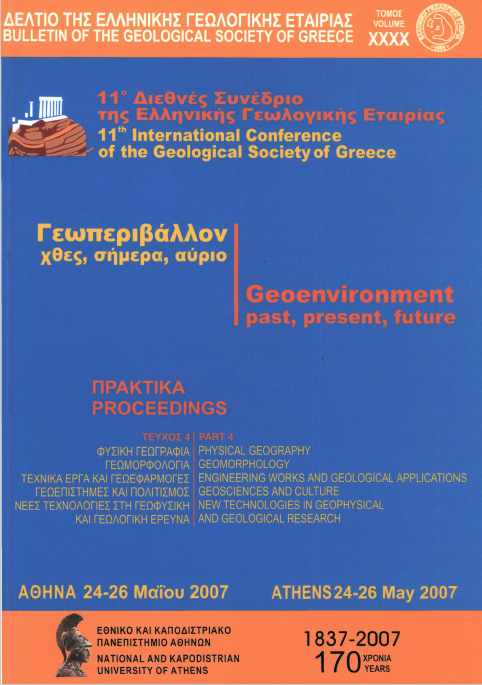Characterization and causes of the building stone decay at the Artemis temple, Brauron, E. Attica, Greece

Abstract
At Brauron (Vraona or Vravrona) area, E. Attica, near the Brauron bay, by the Erasinos river there is an ancient monument of 415 B.C., dedicated to Artemis. The building material used for the construction of the monument is sandstone originated from Neogene sedimentary deposits. The ancient quarries are located 500m away from the monument and traces of quarring are still visible. Monument ruins had been buried under the mud load curried by Erasinos river for many centuries. During the restoration works of the Temple of Artemis besides the stone found in situ, new material provided by the same formation was as well, used. The restored monument stones display intensive deterioration. The purpose of this paper is to study of the decay forms and investigate the decay causes of the building stone in the monument. The decay forms result from intrinsic (endogenic) and environmental factors. The main endogenic factors of decay of the sandstone used as building material, are: a) the high porosity, and the pore size distribution, b) the calcite cement of the stone c) the mineralogical composition, especially the presence of swelling clay minerals. The main environmental factors of decay that result to the calcite and salt crystallization are a) the burial of the ancient building stones, in the brackish water-mud, for centuries b) the frequent floods and possible pollution of the nearby Erasinos river c) the acid rain and aerosol attack d) the bioteterioration. The conclusions of this case study may have application on other monuments of historical interest, in similar environment
Article Details
- How to Cite
-
Tsipoura-Vlachou, M., & Michopoulos, K. (2007). Characterization and causes of the building stone decay at the Artemis temple, Brauron, E. Attica, Greece. Bulletin of the Geological Society of Greece, 40(4), 1859–1873. https://doi.org/10.12681/bgsg.17146
- Section
- Geosciences and Culture

This work is licensed under a Creative Commons Attribution-NonCommercial 4.0 International License.
Authors who publish with this journal agree to the following terms:
Authors retain copyright and grant the journal right of first publication with the work simultaneously licensed under a Creative Commons Attribution Non-Commercial License that allows others to share the work with an acknowledgement of the work's authorship and initial publication in this journal.
Authors are able to enter into separate, additional contractual arrangements for the non-exclusive distribution of the journal's published version of the work (e.g. post it to an institutional repository or publish it in a book), with an acknowledgement of its initial publication in this journal. Authors are permitted and encouraged to post their work online (preferably in institutional repositories or on their website) prior to and during the submission process, as it can lead to productive exchanges, as well as earlier and greater citation of published work.




